Bird Watching Around Key Biscayne
Key News ContributorOctober 25, 2017
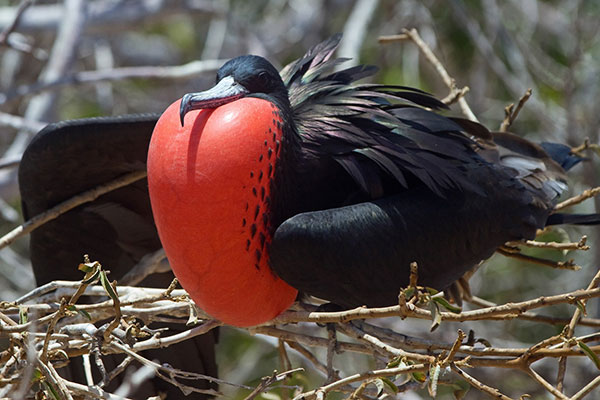
Bird Watching Around Key Biscayne
Magnificent Frigatebird
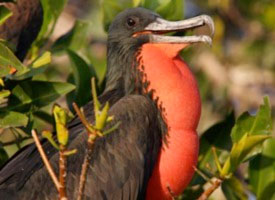
Living up to their name, these birds truly are a magnificent sight. Using their long wings and forked tails they are extremely agile flyers that can glide for hours on thermal currents or deftly snatch food off the surface of the ocean.
Double-crested Cormorant

Found near rivers, lakes and along the coastline – this striking bird hunts by swimming and diving. Its wings are very poorly waterproofed and it can often be seen beside the water with its wings spread for drying.
Brown Pelican

This amazing bird was once on the absolute brink of extinction due to pesticide pollution. The population has bounced back remarkably and they are now a common sight on Florida coastlines. They catch fish by stunning them with spectacular dive bombs and then scooping them up.
Great Egret

Once hunted to near extinction for its magnificent feathers this bird is now a common sight in many North American wetlands. They can often be seen standing dead still before a lightning fast dart of the beak to catch an unsuspecting fish.
White Ibis

A wading bird of the Deep South, the striking White Ibis is frequently seen on lawns looking for large insects as well as probing for prey along the shoreline.
Black Vulture

With an impressive wingspan of about 5 feet, the Black Vulture is a master scavenger that also preys on eggs or newborn animals. It finds its food by using its sharp eyesight or by following other vultures. They are often found in open areas such as shrublands and scattered forests.
Eurasian Collared-Dove

The Eurasian Collared-Dove is a native to both Europe and Asia. They primarily feed on grain and insects in rural areas but have developed into an invasive species in North America and the Gulf Coast.
Mourning Dove
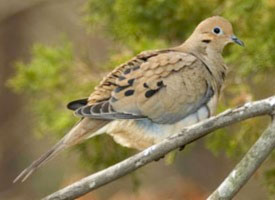
Mourning Doves settle on telephone wires and forage for seeds on the ground. They hold the title for being the most frequently hunted species in North America for both sport and meat. They are also able to reach speeds of 55 mph while flying.
Red-bellied Woodpecker
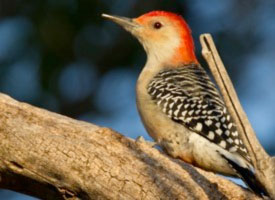
Red-bellied Woodpeckers are commonly found in forests of the East. They are omnivorous, feeding on fruit, nuts, seeds, and insects. They are known to store food by hiding it from other animals within a tree.
Blue Jay
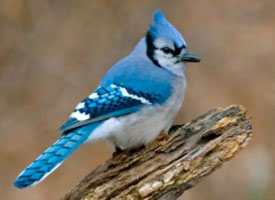
A common sight to many in southern Canada and central and eastern United States, Blue Jays are known for their noisy calls and frequent appearance in and around residential areas. Oak trees produce their favorite food, acorns, which the Blue Jay helped to spread after the last glacial period.
Fish Crow

Found primarily in wetland habitats, the Fish Crow seems akin to the American Crow but is smaller and has a nasal call. They can often be spotted in flocks, mostly along the eastern seaboard of the United States and major river systems.
Northern Mockingbird

Famous for their impressive imitations and repetitive song, the Northern Mockingbird is the only mockingbird found commonly in North America. They are frequent visitors to suburban and urban areas and often seek food on open grassy areas.
European Starling

Often referred to as the Common Starling, the European Starling is a native to Europe and western Asia. They are often irritants, feeding on fruit and other growing crops in agricultural areas. They are valuable, however, as they help to control the number of invertebrate pests in these areas.
Northern Cardinal

Northern Cardinals are found in southern Canada and the eastern United States in shrublands, woodlands, swamps, and gardens. They are often seen on the ground, eating weeds, seeds, and grain. It is a midsized songbird with males being slightly larger than females and having a bright crimson color.
Common Grackle
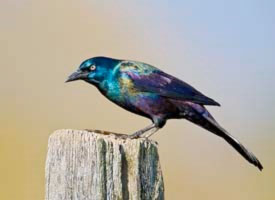
Common Grackles are commonly found in large quantities in North America especially in open areas east of the Rocky Mountains. They are omnivores that forage on the ground for food like corn, insects, berries, and anything else – including garbage. Common Grackles also have a gift for mimicry of other birds and even humans.
Boat-tailed Grackle
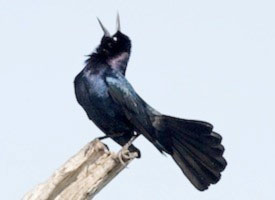
A resident of the east coast of the United States and Florida, Boat-tailed Grackles use human activity to their advantage as they often forage for trash and live in urban areas to escape predators. The male and female differ as the females are dark brown in color and are half the size of males, resulting in the different sexes appearing to be distinct species.
SUMMER MONTHS:
Gray Kingbird
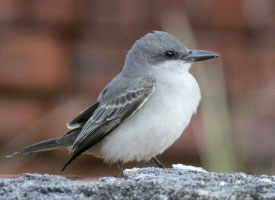
Prevalent in the Caribbean and Florida, the Gray Kingbird is commonly spotted during the summer along the coasts and the southeast region of the United States. They are very aggressive towards intruders as they defend their territory. Their original nesting habitat along the coast has gradually been taken over by development, but now they have adapted to nest in residential areas, farmland, and even cities.
WINTER MONTHS:
Turkey Vulture
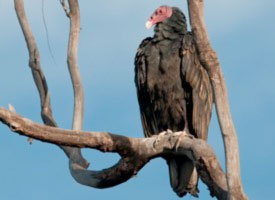
Turkey Vultures inhabit open areas from southern Canada to the southernmost tip of South America. These birds are scavengers and use their great eyesight and sense of smell to find fresh carcasses.
Gray Catbird
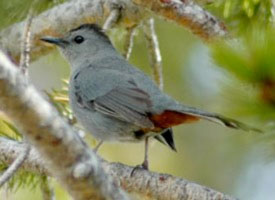
Named for its cat-like call, the Gray Catbird can also mimic the sounds of other birds and even mechanical sounds. They are natives to areas east of the Rocky Mountains in the United States but migrate to the southeastern United States, the Caribbean, and Central America during the winter.
Palm Warbler
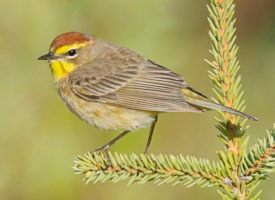
The Palm Warbler can be most easily recognized by its tail-wagging habit. Its nests are often found on or near the ground in an open area and winters primarily in the southern United States and Caribbean.


